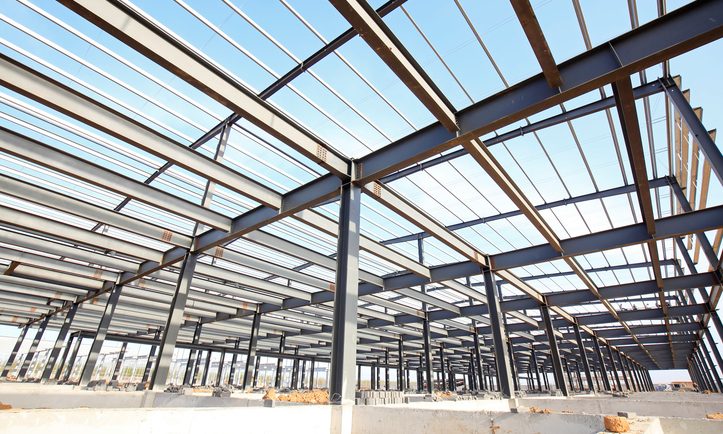New Zealand’s industrial property market remains incredibly buoyant with strong demand and low vacancy helping to drive record low yields, a research report has found.

Steel frame structure
Colliers International’s annual New Zealand Industrial Market Indicators Report found continued upward momentum in all centres over the past 12 months.
Alan McMahon, National Director of Research and Consulting at Colliers International, says investor confidence remains strongly positive across the board.
“Auckland continues to be a huge success story, but we’re also seeing strong performance in smaller centres.
“In Tauranga, the industrial market is experiencing record low vacancy, while in Hamilton, prime vacant space is being absorbed almost as soon as it becomes available.”
McMahon says investment activity has been driven by robust occupier and buyer demand, with a shortage of good quality opportunities driving up prices.
“It comes as no surprise that record low yields, high rental growth, and strong capital appreciation have been the main outcomes.”
Strong growth
McMahon says Auckland’s industrial market has gone from strength to strength.
“The overall industrial vacancy rate is 2.1 per cent, down from the previous record low of 2.2 per cent a year earlier,” he says.
“Demand from both tenants and owner occupiers has been consistently strong over the past year as businesses continue to expand off the back of a strong economy.”
Colliers International Industrial National Director Greg Goldfinch says there is now increasing demand for higher quality, larger footprint buildings, often resulting in businesses seeking design build premises due to the lack of existing stock.
“We recently brokered the largest design build deal the market has seen in recent years, with Bunnings Warehouse commissioning a new 20,500sq m distribution centre at Auckland Airport.
“Smaller industrial premises also remain sought after, with continuous demand over the last 12 months.”
Goldfinch says about 185,000sq m of new industrial development has been completed in Auckland over the past year, while 120,00sq m is currently under construction.
“New supply is basically playing catch up with excess demand, rather than tipping the scales towards oversupply,” he says.
“In fact, favourable conditions are fuelling speculative development, so we’re expecting further prime stock to be built in the coming year.”
Land scarce
However, developable industrial land around Auckland remains hard to find, with 82ha absorbed in the year to November 2016 – one of the fastest rates of land take-up since the global financial crisis.
“This scarcity, combined with surging building costs, has led to significant pressure on rents, which is expected to continue in the short to medium term,” Goldfinch says.
“Average prime warehouse rents are up a fraction at $119/sq m, but the real movement is in secondary rents, which have increased to an average of $98/sq m, up from $91/sq m a year earlier.”
Goldfinch says high investment demand, strong expectations of future rental growth, and a shortage of opportunities has driven yields lower.
“Average prime yields are now 5.8 per cent, down from 6.1 per cent a year earlier, while secondary yields have dipped from 7.2 per cent to 7 per cent.”
Capital booming
In Wellington, demand from both tenants and owner-occupiers has grown even stronger in the past year.
McMahon says the latest survey found Wellington has a record low vacancy rate of 2.9 per cent.
“This is a further reduction from 3.6 per cent a year earlier, showing that pressure is building for development,” he says.
“Rents are increasing across the board, while yields have fallen in both the prime and secondary sectors.”
In Christchurch, prime industrial supply is tight, with demand concentrated on efficient high stud premises.
“Average prime yields now sit at 6.8 per cent, down from 7 per cent a year ago.”
In Dunedin, demand continues to outweigh supply, with little prime stock currently available for either lease or purchase.
McMahon says increasing land values and construction costs will moderate the amount of new industrial development in some centres in the short to medium-term, keeping vacancy rates low.
“The lack of stock means sales levels have eased since last year, but yields are not expected to go too much further south over the next 12 months.”



